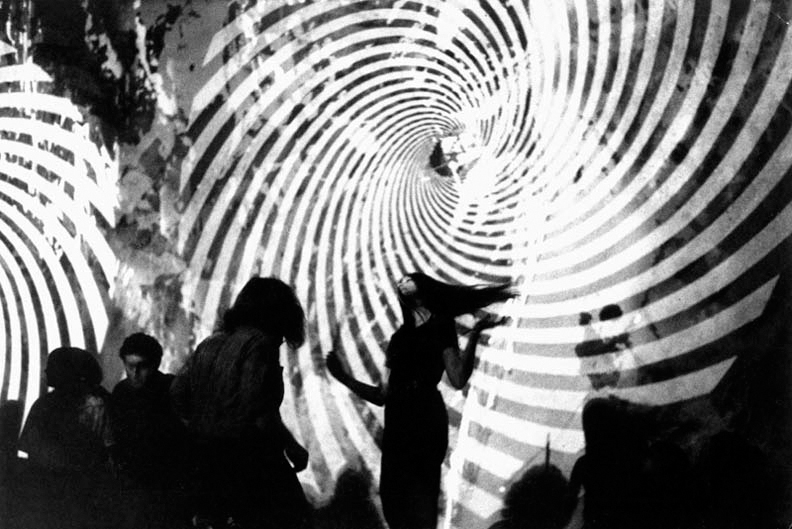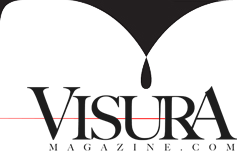

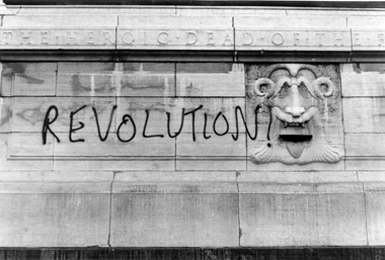
Charles Harbutt, President of Magnum Photos, delivered the following lecture at New York University, Spring 1970. The lecture was followed by a showing of his own prints, and preceded by a screening of the film America in Crisis.
I chose to show this film at the start of my talk tonight because in many ways it is relevant to my topic of change. First of all, the entire Magnum Crisis in the America project, from which the film was made, was very much a punctuation mark in my career—whether an exclamation point, question mark, comma or period—I’m not sure yet. But I do know a fundamental change has occurred in my relationship to my medium.
Let me first of all describe the project a little and then deal with some of its implications.
Early in 1968, Magnum photographers were grappling with the quadrennial problem of what if anything we would do on the U.S. elections. Several of us felt that the 1968 elections would be somehow special; that deeper questions for America were riding than just electing a president. I felt that the basic issue was that the traditional American self-image as learned through public schools, Hollywood movies, ads and Fourth of July speeches—the American Dream itself—was being challenged by a series of ‘realizations’ that were never any part of the dream. Reality was breaking through the dream and the country by and large was resisting the process. I thought it might be interesting to try to show this and my Magnum colleagues agreed. The project was designed to incorporate the photographers on their own terms, in their own concerns, and made extensive use of material that they were shooting anyway or had already shot. But what I want to stress about the project’s origins is that it was documentary in goal. It only wanted to look at what was happening.
After and while it was being done, the photographs were shown through a number of different media—Life, Look, Newsweek and the European magazines used some of the coverages; a book was made; this film was started—all in 1968. And last winter, in 1969, it became one of the Concerned Photographer series of exhibits at the Riverside Museum. There, in addition to the media already mentioned, the photographs were shown in a conventional print exhibition format and in a new chance projection device called the Picture Bandit. The point here is that the project experimented with various media for showing the photographic image.
Which brings me around by the back door to the major topics I would like to discuss tonight: change in photography.
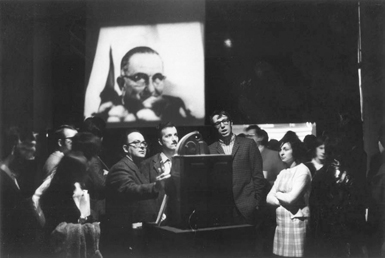
One of the ways that seems to be changing is the photographer’s understanding of the nature of his medium. We have just come through a very long period which has emphasized the utilitarian aspects of photography. It has really been a fairly thorough investigation of how the still photograph can be used to sell ketchup, politicians, social attitudes, magazines, brassieres, screwdrivers, even books and sculpture. We are now ready, it seems to me, for a change—a return, perhaps, or a new spur on the railroad track. One of the amazing things to me, when I think back over the history of photography, is how infrequently photography has been able to be itself.
For example, one of the first names for the photographic process was calotype -which means beautiful picture in Greek. This was a name coined by one of photography’s inventors, William Henry Fox Talbot. He really should have known better, because he himself described his own pictures as ‘fairy images, creations of a moment, destined to fade away.’ This last because hypo hadn’t been invented yet. His wife was much closer to a real understanding when she nicknamed his cameras ‘mousetraps.’ Photographers are trappers—reality trappers. If you trap only beauty or beautifully, you are anti-photographic because unreal. Julia Margaret Cameron was closer when she said in the 1860’s that she tried in her portraits ‘to do (her) duty… in recording faithfully the greatness of the inner man as well as the features of the outer man.’ I like the second part of her definition.
But these were some of the earlier experimenters with a new medium and as with many pioneers, both more and less clear-seeing than their followers.
To illustrate my point in a different way, let me quote a cliché in art history: the invention of photography freed painting from its need to depict reality in the ways of the French Academy and allowed it to explore freely the nature of the medium of painting itself. This exploration of the nature of art and its mediums has continued through impressionism and abstractionism into pop and op and conceptual or non-object producing art. The assumption of that cliché maker was that of course photography must depict reality. I agree with his assumption. But the merest glance at the history of photography shows that to have rarely been the case. First of all, while painting was freed from the strictures of the Academy to do with realism, composition and mood, photography was enslaved. Just think about salon photography for a minute and realize that it is not totally dead yet. Sentimentality is still with us in photography, even if it is the more fashionable sentiment about the poor or the blacks. So is elaborate posing, both for the camera and otherwise. Then realize you’re looking at French Academy style paintings made with cameras.
What happened next, I like to think, is that some photographers knew that this direction—the sentimental, elaborately posed picture was not the best use of their medium and started to search for another road. Unfortunately, to my mind, the road many of them chose, still choose to this day, was a pell-mell, helter-skelter. Keystone Cops chase of painters down the last hundred years of art. Photographers desperately want to be thought of as artists; but their quest for status is a pretty silly exercise in me-tooism, encouraged in odd ways by the arrival of the picture magazines on the scene.
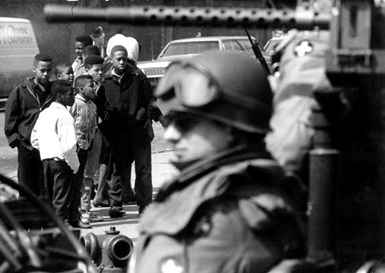
The picture magazines were the death-knell of the salon school of photography. (The magazines in turn were a product of the invention of the Leica, I suppose.) In a way, the picture magazines acted for photography as a whole somewhat in the way photography worked for painting. They unleashed on the world an army of fairly curious photographers more or less bent on capturing reality or at least that aspect of reality in their editors’ minds. This vulgar use of photography encouraged one kind of artistic photographer to ignore reality (it was being done by the journalists) and explore art photography. Some of these even were able to make a living from the magazines for their art. And their art was very interesting. Think about it. Since the war, photography has virtually caught up with modem art. We have had impressionism (filters and grainy color), futurism (strobes and blur), surrealism (double printing), and abstractionism by any photographer who discovers a design in nature. And now paintings from the photo. So I did a story called snapshots from paintings from photographs. I personally find the pursuit bankrupt, especially, since the photographers’ perceptions so frequently come after the painters.’ I am beginning to suspect it is anti-photographic in a very deep way. But more of that later.
And what about those hordes of photojournalists. It must be obvious by now that I think they were on an interesting track for photography. But their numbers have been diminishing rapidly recently because the magazines have been dying. And deservedly so. I think one of the reasons the magazines are dying is that they are not what they pretend to be. That is the photographs have not, in fact, been direct confrontations with reality itself, but a gussied up, prettied up version of reality that would please the art directors whose goals are not truth and meaning, but prettiness and design relationships. This is the deepest failure of the magazine photographer. But there is a second one and that is that the photographs also had to mean something comprehensible to the word-oriented editor. And that meaning was more often than not preset. In other words, don’t confuse me with reality. One gets an assignment to say a particular thing—there’s a lot of poverty in black ghettoes—and not to explore the real visual fabric of the ghetto, which some people think I couldn’t do anyway because I have white in my eyes. And all of this is anti-photographic even before you get to the political-cultural motivations of the magazines to ‘say’ certain things. It also avoids a whole other evenings’ investigation of the timing of when magazines chose to say certain things and why they do and whether what they choose to say is ever very true.
Perhaps it would clarify things at this point if I said in more positive ways what I think photography is. A photograph is a two-dimensional visual delineation of reality made with a camera. There are three decisive factors in the camera: the lens, the shutter and the film. The lens is a piece of glass that bends light rays so that they form an image. The image formed relates directly to whatever object was at the focal point of the lens. The important thing here, and one that is frequently overlooked, is that photography is the only visual medium that has an inherent relationship with reality. The only other mediums that have inherent relationships with reality are the sound tape and, of course, the film which essentially is a marriage of camera and tape recorder. It is interesting to note that Susan Sontag in her book Styles of Radical Will underlines this media relationship when she postulates that the highest use of the film media is the documentary—the trapping of an audio-visual moment in time.
One of the realizations that photography brought about in painters was that there was no inherent relationship between a painting and reality. Or between sculpture and reality. And as everyone knows there is little relationship between the word and reality; not only, in novels and poems, but unfortunately even in journalism where there is a pretense that there is such a relationship. But in word journalism that relationship is primarily an ethical problem for the writer, not a relationship inherent in the medium, in the act of writing. Painting is putting paint on a surface. Sculpture is making a shape out of a material. Writing is putting words on paper. Photography is making image delineations of reality. And photographers have been fleeing from this fact from the first click. Or maybe the second. There’s a wonderful footnote in Kurt Vonnegut’s Slaughterhouse Five that claims that the second photograph ever made was pornographic and you can still buy the prints on the Champs-Elysees.
To put it all another way: to make a photograph, there has to be something other than the photographer and his medium: light, film and camera. There has to be something in reality. For a painter there just has to be the painter and his medium paint and surface. For a writer, pen and paper.
This brings us to a fundamental distinction. Photography … is not … art. It is something totally new in human experience, something humans have not been able to do until the last century or so. Like flying. Or blowing up the whole world. (I hope we survive our inventive little minds). The basic impulse of the photographer is diametrically opposed to the basic impulse of the artist no matter what the artist’s medium. The artist is trying to bring into existence something (even if only a concept) that never existed before. The photographer is trying to preserve, with the lens and especially the shutter, something in reality that will cease to exist in just that way in the next moment, or hour or day.
One curious thing is that you can’t take two pictures of a human being and have them be line for line the same, unless that person is dead. And then you can only do it for a while. Change. Photography is deeply related to change, but in a conservative way. It wants to stop change. It also wants to lay claim to immortality. We can see pictures of Abraham Lincoln. In a way, because the photograph exists, not all of him died. We can still reclaim a particular visual moment of his life that occurred over a century ago. You can’t do that with any paintings of him. All you can reclaim is the artist, not really, really Lincoln. Not for sure. Not as inherent in the medium of painting itself.
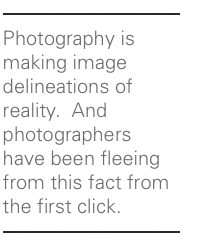
Which brings another point bumping to the surface. The product of the photographic medium is itself a medium. When one bumps up against a painting, that is where one stops. There is nothing beyond the painting but the artist. In a photograph, one goes beyond the photograph to what was photographed as well as how or who photographed. In an old master, like Sir Benjamin Stone, while his compositions are delightful, still there is the desire to feel people now gone. Their crumpled clothes and funny moustaches. All that.
And this in turn brings us to another point. If we now had a photograph of Moses or Jesus or Mohammed or Caesar, we would first of all want it to be very good technically. If it were nicely composed at a decisive moment, all of that would be a bonus, but not essential. Because what we’re seeking is the surface visual reality first, the niceties second if at all. All that painting has as inherent in the medium is the niceties. That’s why there’s so much stress on style and why the fashions change so. Apart from the economic motive that is. But in a photograph, if the reality is shattering enough, we might be content with very few niceties at all.
Before I go on to my next point, I would like to try a little experiment. I’d like everyone here to close their eyes. Now turn your head left or right, up or down. Now, when l say click, open and close your eyes very quickly. Ready? Click. Now those of you who went along with me have just experienced the photographic moment. What did it feel like? One of the things I felt was a sudden rush of reality, a light and the corner of the lectern. A student of mine said that be noticed that he was still there. I think that this sense of life, of immediacy, of quickness, of simple visual sense perception is the point at which great photographs are made. You can open your eyes now. I think great photographs come from that moment in the process of cognition before the mind has analyzed meaning or design and at which the experience and the person experiencing are fully,
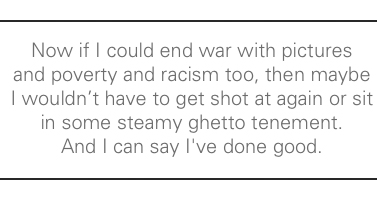
In the area of design, I am only prepared to ask some questions. When you blinked your eyes, did you notice a design. Most likely not. But was not the experience pleasant? Just to see. If it was and my hypothesis about the photographic medium and moment is correct, then design is imposed on the photograph as a consideration from another medium. It is a hangover from the salon days and from the days (still with us) when photographers thought they were artists. The design I’m talking about is design in the traditional art school, ad agency sense, where what is primarily interesting about a photograph is the way space is organized. In this kind of photograph, the camera is used to achieve an object which has more in common with paper cutting and drawing than reality. It is using the camera as a graphic arts’ tool like a linoleum cut. And the products should be judged on that basis. But not as photographs because they do not use the medium of photography to achieve the goal of the medium of photography, but rather to achieve the goals of some other medium—let’s say printmaking. I personally feel that it is only when one goes with one’s medium that success is possible. Paintings are great when they do things that can only be done properly with paint. The same with photos.
This explains two things that have long puzzled me about photography. It explains why truly great photographs are anonymous. That is: you can hang a fine Benjamin Stone and a fine Stieglitz, and a fine Atget and a fine Cartier-Bresson and a fine Frank, and a fine Weston (and one of my snaps of course) on a wall and they will share far more than they will be different, except in small technical ways. That is because the best use of design in photography flows from the discovery of the inherent design structure in reality. To put it another way the best photograph is that in which form and content are deeply interrelated where one discovers the meaning through the form and the form through the meaning—the form’s inevitable given the subject. I think most of us are aware that reality, has its own form and that the superimposition of form can be misleading. For example, all of us are aware of how hip argot can take a word and give it the opposite connotation to its dictionary meaning. Like the word bad which can mean good. So the superimposition of a form on reality solely for the purpose of design can tend to impede the content from being apparent.
A more important point is that if we are open to reality, we in fact perceive its meaning through its form in reality. The job of a photographer is to discover reality’s forms and meanings.
This also explains why the effort to achieve a personal ‘style’ in photography depends much more on the repetition of technical gimmickry, (white backgrounds, dark prints and ferricyanide, pearly overdeveloped highlights, color correction filters used to distort) and why these efforts become corny and unsatisfying so quickly. It is because the print is not the end, the goal of photography but it’s the sharing of perception and, even more, the sharing of reality. Back to the crumpled clothes and the funny moustaches,
But to go back again to the winkin’, blinkin’, and nod theory. If a photograph is best made at the moment before a visual perception is broken down and analyzed into its design and intellectual parts, and if that means that heavy-handed, over-obvious, superimposed design is destructive of photographic integrity, then what about meaning in a photograph. And especially, what about the kind of meaning implicit in the words `concerned photographer.’
On the little card that announced this lecture series, Lewis Hine is quoted as saying: ‘There were two things I wanted to do. I wanted to show the things that had to be corrected. I wanted to show the things that had to be appreciated.’ There must be more. Or less. Pictures take me. I don’t take pictures. What about all those things that are just funny or curious or even triumphantly, overwhelmingly there? Like Mt. Everest. I take pictures because I have eyes and because a camera is a mechanism for cheating time. The grandmother with her box brownie knows what photography is all about. She wants to take a picture of junior because junior is going to grow up, and we’re all going to get old and complicated and right now in the summer sun junior is a source of joy. Click. Now nothing, not age, not trouble, not vicissitudes, not dope, not long hair, Nothing, no thing can take that moment away from Grandma. Change. And she doesn’t care if anyone else wants to appreciate junior or correct him at all.
Let me quote Leonard Freed again: `Why am I a photographer? It’s the desire of retaining my sanity, the exploration of the mind’s limit and man’s limitation. I wish to preserve, to contain, to measure and to expand. I photograph strangers, the shell of things, not the mind.’
The question I have about the mind and meaning in photography is that meaning like design is more often an imposition (no?) by someone outside the reality being photographed. It is imposed, but shouldn’t it be discovered? That is: a photographer consciously pre-edits out of reality, anything that doesn’t concern him. If social photographers are to be believed, there is only sorrow in Appalachia—not covetousness, not lust, not envy, not—oh certainly not—sloth. Can’t you see that by photographing people this way, we impoverish and malign our subjects? Rob them of their humanity? And what about gaiety, romance, adventure, arrogance, drunkenness, whatever? And if we were only to look at photographs from the current social landscape school, where have all the people gone? Although that is a statement in itself, it’s hardly the intended one or one I’m ready to believe that there are no more people. One of the curious things about the journalistic photographer or the concerned photographer is his tendency to break the world down to either saccharine or vinegar. What about chili peppers? Or béarnaise sauce? Or meat and potatoes straight?
There are a few things we should bear very clearly in mind when we talk about the concerned photographer. Concerned photography is propaganda. We call it concerned because roughly speaking the goals implicit in the photographs or the attitudes are humanistic, for social betterment, maybe even bleeding heart. But realize that from Hitler’s point of view, Heinrich Hoffman and Hugo Jaeger, his personal photographers, were concerned photographers. Their goals were the betterment of the human race—Aryan version. This is just as true, this role of propagandizer for David Seymour, as horrible as that may sound. And oddly enough to the degree to which they were functioning most truly as photographers, to that degree we can respect them all. To the degree to which they simply gave us reality sans message, to that degree they are worth looking at. I am as taken with Alice Austen or Bryant as I am with Jacob Riis. And to the degree to which consciously or not they gave us less than reality, to the degree they were concerned and gave us only their concerns, to that degree their own photographs fail even their own purposes. That’s because there is something faked, something less than what would jibe with the viewer’s own experiences of reality. And such photographs fight the medium. And because this has been done so much in photography you now have the phenomenon of the reaction to the My Lai pictures. They were faked, not the whole story. What people still very deeply want in a photograph is that it lives up to the magic of the medium, that it really be what is seems to be. And that the photograph be itself a medium, a way of getting at reality.
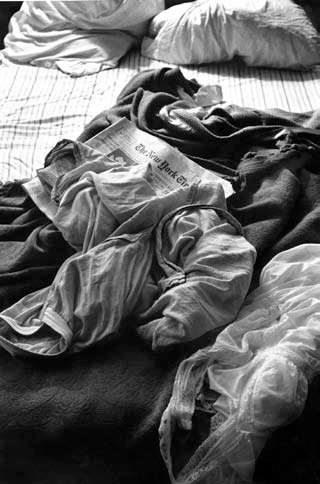
I think this tendency to distort comes from many causes in photography. Journalistic photographers of this sort generally have very broad experiences of life, if not deep and sustained ones. I have been to debutante balls and corporate board meetings, lunched with lepers and cruised with cops. I’ve been shot at in wars and otherwise. Run with arsonists during black riots and drunk with racists. And along the way, I’ve noticed a few imperfections in how the world runs. Now if I could end war with pictures and poverty and racism too, then maybe I wouldn’t have to get shot at again or sit in some steamy ghetto tenement. And I can say I’ve done good. And since I am such a small integer in a democracy in the world, I will have been able to exert more than my share of power on the course of events. I guess every man wants to play king or dictator. At least benevolent dictator. But it also has to do with sanity. If I want to show love for my wife, I show her Iove. I don’t take her picture. And I never ask her to take mine, especially not when I want love. If I want to end the war, I’d be far saner not to pay taxes, or be a conscientious objector or even more, than to take pictures of an antiwar demo. The only reason I can really summon any more for taking pictures of demonstrations is that they are such a frequent occurrence in real life in this country in my time. But having noticed that and photographed them, I then have the urge to photograph other things like the coffee shop the march passed. And for the same reason. In my daily life, I experience a lot of coffee shops. They are also an important part of how I perceive being alive.
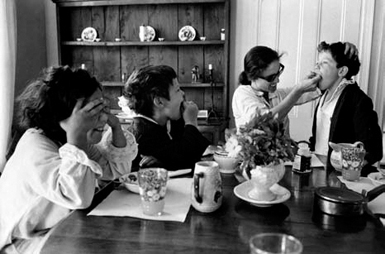
To come at concerned photography from another direction, I think, it is very much a conjunction of photography and journalism. Photojournalism is applied photography, photography for a goal. The goal is rarely to show people a reality they did not see, certainly not reality in its fullness. The goals are mixed: to sell magazines, to sell ideas. Concerned photography is the editorial page. Now one of the rules of Aristotle’s Rhetoric which is the bible of a good editorial writer is to present only those facts that build your case. Now you can get away with that when everyone knows writing has no inherent connection with reality. But you can’t in photography. Another difficulty in concerned photography is the strain of trying to come up with pleasantly designed pictures (so the art directors will run them) of ugly, discordant, disturbing reality.
Let me try it one more way. I think Robert Capa is a very fine photographer indeed. If his photographs were solely designed to end war, he was a failure. I don’t know why Capa photographed war. I know some war photographers and they have a very mixed bag of motives. Some like to live on the razor’s edge of danger. Some do it from guilt. Some have death wishes. Some want to end war. Some want to show the victorious armies. I imagine there are even some who think war is totally noble. Some, like me, did it because they were there and so was it and there was no way out that I could live with. All I know about Capa is that he, in fact, photographed war. And not just the suffering. Anyone who’s been in action knows that something very interesting happens there. The closer you come to flying bullets; the less men are petty and oddly enough the less men hate. A good combat soldier is a very cool customer. Someone driven by hatred isn’t very useful at the front, although he may earn medals for acts bordering insanity (which side of the border?) and acts which may have endangered many men. Capa photographed some of that coolness. And the insanity. And a bit of nobility and courage too. He also understood about war. Remember his photograph of the liberation of a French town where the victors have shaved the head of a girl who lived with a German. I have a very strong sense of loss here. Both victor and vanquished lost; that’s what war’s all about. Capa was a very fine photographer because he photographed something that human beings seem to do a good deal of their time. And he photographed it fully. Because it was there. And somebody had to do it … that way. Capa was a very fine photographer. He also, so I’m told, knew the difference between making love and making pictures.
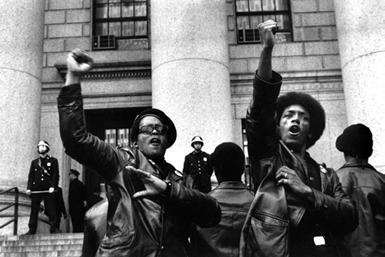
My basic worry about being a concerned photographer is that it implies an arrogant and simple-minded stance before the world – arrogant because we presume to think we know what’s best for the world to become or for our viewers to see and simpleminded because our photographs too frequently just say one thing and life is complex.
But on the other hand, they, more than most photographers, are at least concerned with some aspect of reality. Which is more than I can say for most fashion photographers or advertising photographers or industrial photographers or Hollywood photographers. That’s all just pornography, you know, with very little redeeming social value however much arty merit. I guess I appreciate them about the way a sculptor must a stonemason. Stonemasons make better livings than sculptors. So I guess if one is to make one’s living from magazines and vou can stand making a living from suffering you should be a concerned photographer. It’s marvelous how complex life is.
www.actualityinc.com
